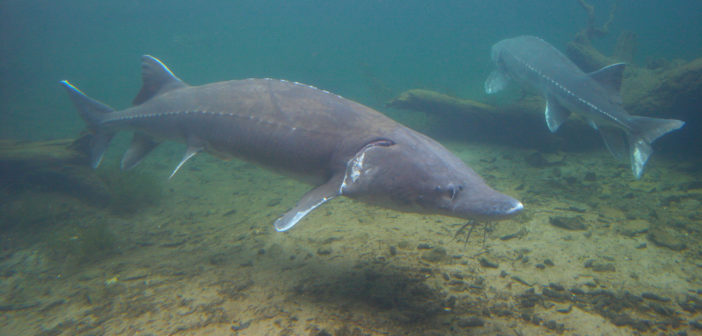Produced by TRAFFIC, World Wildlife Fund (WWF), U4 Anti-Corruption Resource Centre (U4 ACRC), and Northumbria and Utrecht Universities, Corruption and wildlife crime: A focus on caviar trade examines how corruption facilitates the flow of illegal caviar along the value chain, in order to identify possible intervention strategies.
The study identifies a range of corrupt practices, ranging from bribery of border officials, poachers painting marks on their fishing boats to show police officials they paid bribes to avoid inspection, the abuse of scientific fishing permits as a cover to legalize catch of wild sturgeon in the Caspian Sea, and even “black washing,” the misdeclaration of legally farmed caviar as “wild-sourced” because of the higher price it attracts. The authors describe the latter as “a unique corrupt practice for wildlife crimes, and possibly unique to the caviar industry.”

Corruption throughout caviar supply chains often includes the mixing of illegal and legal products in one shipment, as well as the use of falsified or forged CITES permits. Image via TRAFFIC.
Corruption is a severe threat to wildlife conservation globally: the study recommends adoption of a “top-down and bottom-up approach” to address corruption within wildlife crime given the large differences between commodity types. For example, smuggling caviar uses different mechanisms than smuggling timber, due to the scale of the commodity and different shipment modes used.
Among the solutions put forward for dealing with corruption generally are considering social norms and conducting social network analysis to understand how corrupt wildlife crime networks operate in practice. If corruption has become normalized, individual behaviors will be shaped towards corruption rather than away from it.
The study also recommends ongoing collaboration between anti-corruption and wildlife experts, with a focus on sharing lessons from different environments; further research into the links between legal and illegal actors to establish how corruption works in practice; following the money; developing interventions to mitigate or reduce corruption; and establishing mechanisms to measure the effectiveness of interventions, and being prepared to adapt as events unfold.
“Changing attitudes through understanding and changing social norms could be more effective than an enforcement orientated approach and is key to addressing this most intractable yet critical wildlife crime issue,” said Rob Parry-Jones, of WWF’s Wildlife Crime Initiative.
However, the study notes the lack of knowledge about what actions are effective in dealing with corruption. Reducing corruption may be one of the most important factors in dealing with wildlife crimes, as corruption undermines the effectiveness of conservation programs, reduces law enforcement and political support, establishes incentives for the over-exploitation of resources, undermines the effectiveness and legitimacy of legislation and acts in tandem with organised crime.
“Future research in this area should adopt social network or political ecology-type analyses to further investigate patterns of corrupt behaviors in the caviar trade across contexts. We can then help improve techniques aimed at disrupting or shutting down illegal trade, by minimizing corruption’s role in undermining law enforcement and customs controls” said Aled Williams, Senior Program Advisor, U4 ACRC.
Click here to read the entire report, Corruption and wildlife crime: A focus on caviar trade.
Featured image: sturgeon. Over 85% of sturgeon species are classified as at risk of extinction, and the continuing demand for wild-sourced caviar is a major threat to their survival. Image source Geoff Parsons, CC BY-SA 3.0.





